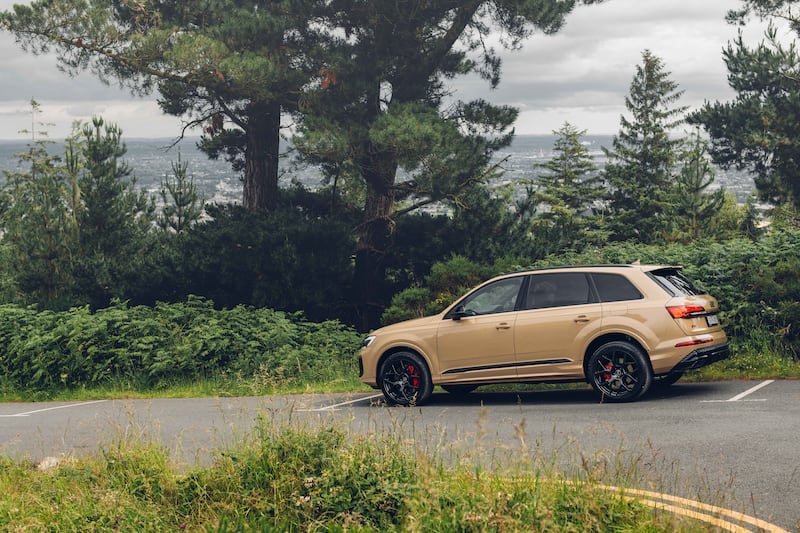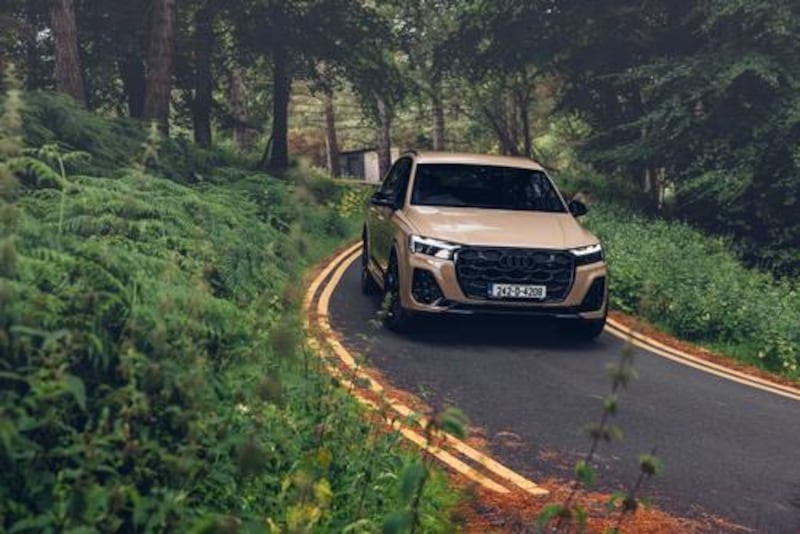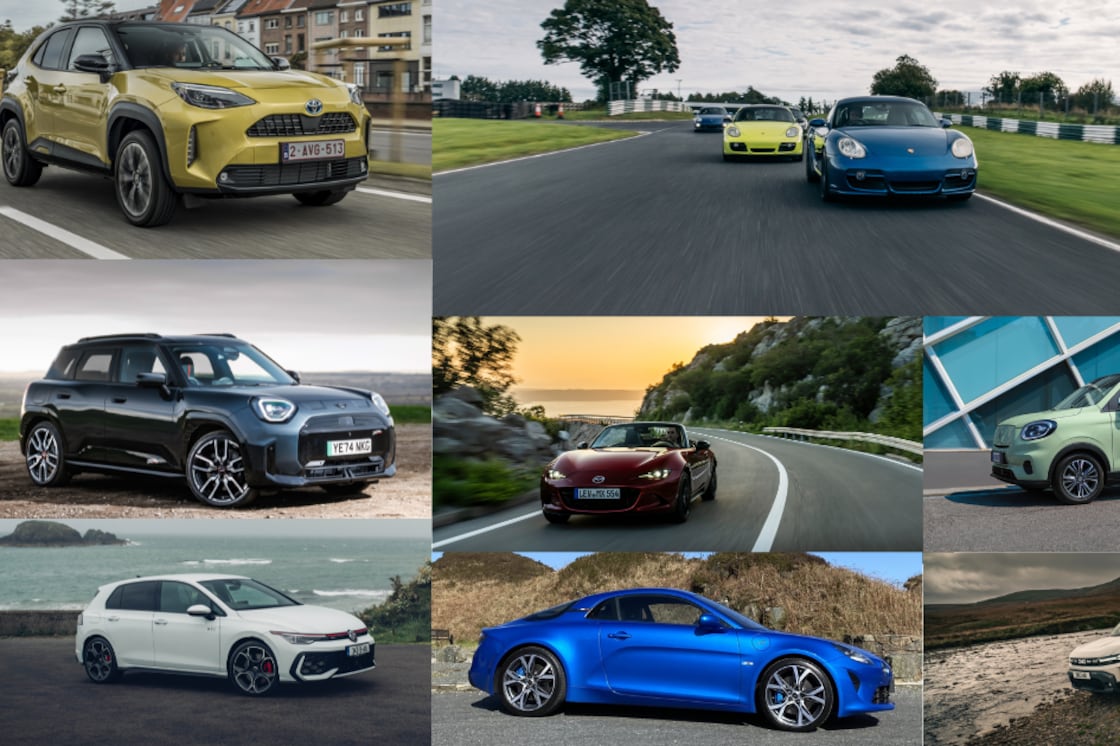I would like to track down the person within Audi Ireland’s corporate structure who dreamt up the specification for this particular press demonstrator car ... and shake them firmly by the hand. Why? Because of the colour.
I realise and accept that the shade of paint applied to a car should not particularly divert us on these pages. The mechanical or electrical make-up, price, running costs, deftness of dynamic performance (or otherwise), and softness of ride comfort (or ditto) are all things that should be higher up the list of observations.
However, this time around I think it’s genuinely important. After all, it was Apicius, the 1st Century Roman gourmand, who is credited with the phrase “we eat first with our eyes”. Pithier in the original Latin – ante oculos edimus – it’s true today, and it’s why restaurateurs set such high esteem by the presentation, and colour, of the food on our plates. It’s equally what makes it so puzzling that so many of our cars are painted in essentially non-colours. Grey, black and white are not colours, but a lack thereof. Why do we dress our cars down in such drab camouflage?
Blame the inexorable rise of the German premium car in the 1980s and 1990s. Designers and product planners at the time thought that it would make their cars appear more appealing and soberly desirable if they were painted the same colours as prospective owners’ double-breasted suits. Hence the greys, blacks and occasional dark blues became the default choices.
READ MORE
Our Audi Q7 TFSIe plug-in hybrid test car was not grey. Instead, someone – some wonderful someone – had chosen Sakhir Gold. Gold? Not quite, more milky coffee really but even so a striking shade, more redolent of the 1970s than the Grand Prix allusions Audi is trying to drum up as it prepares its own Formula One team (Sakhir is the home of the Bahrain Grand Prix and Audi will have it’s own Formula One team in 2026).

Divisive? Certainly, but that is surely better than giving your eyes repetitive strain injury by having to deal with yet another non-shade of grey. One colleague described it as “mid-vomit” but I’m having none of that.
All of this rather nicely distracts from the fact that there’s not a lot new about the new Q7. There are some small styling tweaks to the outside – primarily around the grille, lights, and bumpers – but nothing that dramatically changes a car familiar to us since its launch in 2015. Almost a 10-year-old design? Yes, but that is rapidly becoming more commonplace as carmakers start to stretch out the lives of their existing models, in response to continuing ennui among car buyers when it comes to newer electric models.
Mind you, this Q7 is a little bit electric, thanks to the addition of a plug-in hybrid system, hence the TFSIe badge. The powertrain – a 3.0-litre V6 turbo petrol engine combined with a 130kW electric motor and a big battery – is essentially the same as that used by some versions of the vaunted Porsche Cayenne, and the slightly less vaunted Volkswagen Touareg.
Uniquely, the Audi offers seven seats, when the Porsche and VW don’t, but that advantage is negated here, as the hybrid’s battery takes up the space where the extra row of seats would go, hence this particular Q7 is strictly a five-seater.
At least the battery has the excuse of being bigger than it used to be, stretching to 22kWh of usable power, which gives the big Audi a potential range of up to 83km on one charge. Well, in theory.
To be honest, the best I could get out of a charge was more like 55km, and it doesn’t help that the battery can only be charged from AC power at 7.4kW. That’s fine if you’re only ever charging up slow and long at home or work, but when many of its competitors can now offer rapid 50kW charging it seems like a somewhat poor effort.

Performance is at least strong, with almost 400hp and 600Nm of torque, the big beige (not vomit) Q7 fairly rockets off the line, and will hit 100km/h in 5.7 seconds from rest. Which feels exceptionally rapid when you’re sitting four feet in the air.
This is normally the bit of the piece where I’d start talking about how the Q7 feels bulky and numb to drive. But actually ... okay, so this is a 2,460kg car and while there are limitations, it felt rather pleasantly responsive and composed.
The ride quality is on the firm side, as you’d expect from a car lugging a considerable heft of battery around with it, but it’s well-damped and the air suspension means that the worst shocks are kept well at bay. Combine that with, for an Audi, atypically sharp steering and you’ve got a dynamic package which is not bad at all.
Efficiency? Well, if you’re making the fullest possible use of the battery and stretching your electric range as much as possible, it’s probably not too bad, but with me being unable to charge at home, and undertaking several long journeys in the Q7, it meant average economy worked out at 9.5-litres per 100km. Not disastrously bad, perhaps, but certainly not that great.

The cabin’s quality, comfort, and roominess do salve that economic deficit somewhat, but I still think that Audi is missing a trick by making its interiors too heavy on the black-and-chrome, which just doesn’t look nor feel as welcoming as what BMW and Mercedes are up to at the moment. Equally, the big twin touchscreens (one for infotainment and one for climate control) were maddening at times, especially the silly haptic response which made the screen feel as if it was clicking under your finger. The problem is that sometimes it clicks even when you haven’t pressed the button properly, adding to the confusion and annoyance.
Options in this Q7 55 TFSIe would cost you almost €100,470. Take away the options (the priciest of which was the “black pack” which gives you darkened exterior trim and 21-inch alloys, for €1,815, and I also think I could have lived without the €1,270 “comfort key” and the €1,411 “super sports seats”) and you’d pay €93,100. That is at least a little less gasp-inducing. It doesn’t help that the updated Volvo XC90 – pretty well the default choice in this class – can combine seven seats with PHEV power, as can the much more affordable Mazda CX-80, which while Audi may not appreciate the comparison, is a potential rival.
Still worth it for the colour, though. Grey is so passé.
Lowdown: Audi Q7 55 TFSIe S-Line
Power: 3.0-litre V6 turbo petrol engine with 130kW e-motor and 22kWh lithium-ion battery producing 394hp and 600Nm of torque and powering all four wheels via an eight-speed automatic transmission.
CO₂ emissions (annual motor tax) 33g/km (€140).
Fuel consumption: 1.4-1.2l/100km (10.5l/100km with discharged battery) (WLTP)
0-100km/h: 5.7 seconds.
Price: €100,470 as tested, Q7 starts from €87,890.
Our rating: 3/5.
Verdict: More fun to drive than you’d think and tolerably efficient, but the lack of extra seats grates. Be brave with your colour choice.















